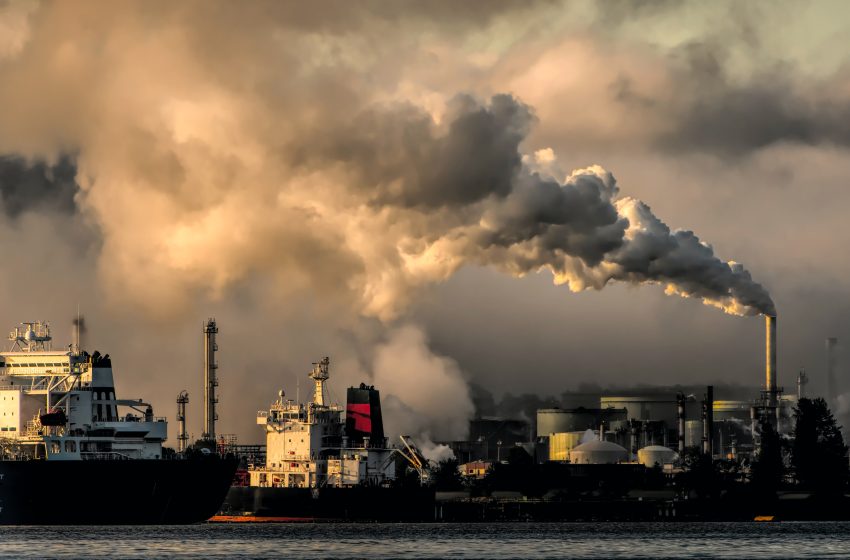
Emissions Of CO2 Are Expected to Increase in 2022 and 2023!
The United States has been concerned about carbon emissions. It contributes to pulmonary sickness due to smog and air pollution, it causes climate change and global warming.
Other implications of climate change produced by greenhouse gases include extreme weather, food supply shortages, and increasing wildfires. Energy-related carbon dioxide emissions in the United States are expected to rise this year. In its current Short-Term Energy Outlook, the Energy Information Administration (EIA) predicts that energy-related emissions would rise in 2022 and 2023.
According to the EIA, during the pandemic, energy-related CO2 emissions in the United States reduced by 11% mostly by 2020.
As the US economy gradually returns to pre-COVID economic activities, CO2 emissions are expected to rise by 6% in 2021. According to the EIA, increased economic activity, among other factors, will result in a 2% increase in emissions in 2022, with emissions remaining roughly unchanged in 2023.
While asking about the global energy crisis Craig Latimer, the CEO of Katal Energy Says, “I think biofuels play a part as a blendstock to reduce the carbon intensity but we should continue to explore all options to address the global energy crisis. “
While addressing the zero-carbon future he also described how society should concentrate on the low carbon solution to put emissions into an immediate decline while supporting industry transition to a zero-carbon future.
The Short-Term Energy Outlook also revealed, US energy-related CO2 emissions would total 4,971 million metric tonnes (MMmt) by 2023, which is still 3% lower than the 5,144 MMmt created in 2019 and 17% lower than the maximum level of 6,016 MMmt in 2007.
However, to minimize CO2, NOx, SOx, and PM emissions Katal Energy has been playing an important role, cooperating with leading corporations, engineers, and academics to conduct carbon intensity reduction research and development.
Katal Energy has introduced Katal Green Fuel (KGF) where Katal blends a customer’s existing diesel fuel with a proprietary bio-additive blend and water, to create an engineered drop-in nanoemulsion fuel that is fully compatible with all diesel-fuelled compression ignition engines.
Due to the chemistry of the bio-additive ingredients, the water nano-droplets are fully entertained in the fuel and are stable until exposed to combustion conditions.
“Katal Green Fuel is 83% by volume customer’s existing conventional diesel fuel, this dominates basic fuel properties and therefore provides as much shaft power output and calorific value as conventional diesel. The patented bio-additive blend significantly improves fuel lubricity, protecting high precision parts from wear. KGF exhibits thermodynamic stability and passes through existing fuel filters and water separators without change” he said while talking about the fuel.
To Read More: https://worldecomag.comissuu1/
Natural gas-related CO2 emissions in the United States are expected to increase by 1% in both 2022 and 2023, according to US Administration experts. Electricity generating and heating are two among the most frequent utilization of natural gas, therefore both energy prices and weather have an impact on natural gas usage in the United States.
Air pollution is the world’s fourth greatest cause of death, accounting for 6.5 million fatalities each year.
The CEO further added, “The reduction of CO 2 is on everyone’s radar due to carbon taxing and government policy yet NOx and particulate matter attribute to potentially more adverse health effects, yet it is being widely overlooked. Katal promotes social sustainability goals by not only reducing CO2 emissions but also other critical emissions affecting air quality in communities both locally and globally.”
“Katal promotes sustainability at the societal, corporate, and economic levels through the collection and of real-world emissions data which will be gathered with Portable Emissions Data (PEMs) equipment which will be installed on operating assets. The emissions data gathering validate sustainability measuring, monitoring, and reporting and provide verifiable and auditable data that can help companies meet their goals for ESG reporting and sustainability.”
Policymakers and climate campaigners are likely to stick to the net-zero by 2050 objective. To achieve this aim, however, everyone must collaborate to develop additional ways to minimize carbon emissions in our environment.






